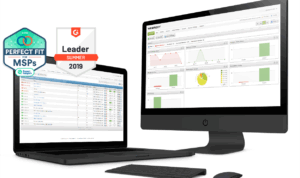With fleet tracking software leading the charge, managing logistics has never been easier. This innovative technology not only enhances operational efficiency but also provides real-time insights that can transform how businesses operate. As industries evolve, the importance of effectively tracking fleet movements becomes paramount in ensuring timely deliveries and optimizing routes.
The advantages of fleet tracking software extend beyond mere tracking; it helps in reducing costs, improving safety, and enhancing customer satisfaction. By integrating GPS technology and data analytics, businesses can make informed decisions that drive success. With various features like route optimization, maintenance alerts, and driver behavior monitoring, fleet tracking software serves as a crucial tool for fleet managers aiming for excellence in their operations.
In today’s rapidly evolving digital landscape, the significance of effective communication cannot be overstated. Whether it’s for personal interactions, business transactions, or even social media engagements, the way we convey our thoughts and ideas plays a crucial role in determining the outcome of our exchanges. Understanding the nuances of casual formal language can greatly enhance one’s ability to connect with diverse audiences while maintaining professionalism.Casual formal language is characterized by a blend of friendliness and professionalism.

It strikes a balance that is approachable yet respectful, enabling open dialogues without the rigidity often associated with formal communication. This style is especially beneficial in environments where relationships matter—such as in workplaces, customer service, and networking events.One of the primary advantages of using casual formal language is its versatility. It can be adapted for various contexts, whether you’re addressing colleagues at a meeting, sending an email to a client, or engaging with followers on social media.
For instance, instead of starting a business email with a stiff “Dear Sir/Madam,” you might opt for a more relaxed “Hi [Name],” which sets a friendlier tone while still being respectful.When crafting messages in casual formal language, it’s essential to pay attention to your audience. Understanding their preferences and expectations can help you tailor your communication effectively. For example, in a creative industry, a more relaxed tone might be appropriate, whereas, in a corporate environment, maintaining a degree of formality could be necessary.
The key is to read the room and adjust your language accordingly.The choice of vocabulary is another critical component of casual formal language. Using simple, clear words instead of jargon or overly complex phrases can make your message more accessible. This approach not only enhances comprehension but also fosters a sense of connection with your audience. Imagine receiving an email filled with industry jargon that feels impersonal; in contrast, a message that uses relatable language and examples can resonate much more effectively.Another aspect to consider is the use of contractions.
In casual formal communication, contractions like “you’re,” “don’t,” and “can’t” can soften your tone and make your writing feel more conversational. This technique invites readers in, creating a sense of familiarity and openness, which can be especially valuable in customer interactions or team collaborations.Additionally, maintaining a positive tone is vital when engaging through casual formal language. Positivity can be conveyed through word choice, sentence structure, and even punctuation.
For instance, using exclamation points sparingly can convey enthusiasm without coming off as overly excitable. A phrase like “I’m excited to share our new project with you!” strikes a happy medium between enthusiasm and professionalism.Furthermore, storytelling can be an effective tool when communicating in this manner. Sharing anecdotes or personal experiences can enrich your messages and make them more relatable.
For instance, if you’re discussing a successful project, sharing a brief story about a challenge you faced and how you overcame it can engage your audience and provide valuable insights. This technique not only adds depth to your communication but also humanizes your message.Active listening is another integral part of effective communication in casual formal language. Engaging with your audience means not just speaking or writing effectively, but also being receptive to their responses.
This can involve asking open-ended questions that encourage dialogue or paraphrasing what someone has said to show understanding. For example, in a meeting, saying “So, if I’m understanding correctly, you believe we should prioritize this project?” demonstrates that you value input and are actively participating in the conversation.Non-verbal communication also plays a significant role in how your message is received.
In face-to-face interactions, body language, facial expressions, and eye contact can enhance your casual formal communication style. A warm smile and open posture can create a welcoming atmosphere, making others feel comfortable sharing their thoughts. In written communication, emojis or friendly sign-offs like “Cheers” or “Best” can add a personal touch while maintaining professionalism.Moreover, feedback is crucial when it comes to refining your communication skills.
Seeking input from peers or mentors can help you identify areas for improvement and adapt your style to better suit your audience. Constructive criticism can provide insights into how your messages are perceived and what adjustments might enhance clarity or approachability.In the digital age, mastering casual formal language also extends to online platforms. Social media, blogs, and professional networking sites require a nuanced approach to maintain engagement.
For instance, while a LinkedIn post might require a slightly more formal tone, a tweet can be more relaxed and conversational. Tailoring your style to fit the platform ensures that your message resonates appropriately with your audience.In conclusion, the art of casual formal communication is not only about what you say, but how you say it. Striking a balance between friendliness and professionalism opens doors for effective interaction, fostering stronger relationships and clearer exchanges.
By understanding your audience, choosing your words carefully, and engaging actively, you can enhance your communication skills significantly. As workplaces and social interactions continue to evolve, honing this style will undoubtedly serve you well in a variety of contexts, making your messages not just heard, but truly understood. Embrace the power of casual formal language as a means to connect, collaborate, and succeed in your endeavors.
Top FAQs
What is fleet tracking software?
Fleet tracking software is a technology that allows businesses to monitor and manage their fleet vehicles in real-time using GPS and data analytics.
How can fleet tracking software reduce costs?
It helps optimize routes, reduce fuel consumption, and improve maintenance scheduling, which collectively lowers overall operational costs.

Is fleet tracking software easy to use?
Most fleet tracking software solutions are designed with user-friendly interfaces to ensure ease of use for fleet managers and drivers alike.

Can fleet tracking software improve driver safety?
Yes, it monitors driver behavior, providing insights that can lead to safer driving practices and reduced accident rates.
What features should I look for in fleet tracking software?
Look for features like real-time tracking, route optimization, maintenance alerts, driver behavior monitoring, and reporting capabilities.














